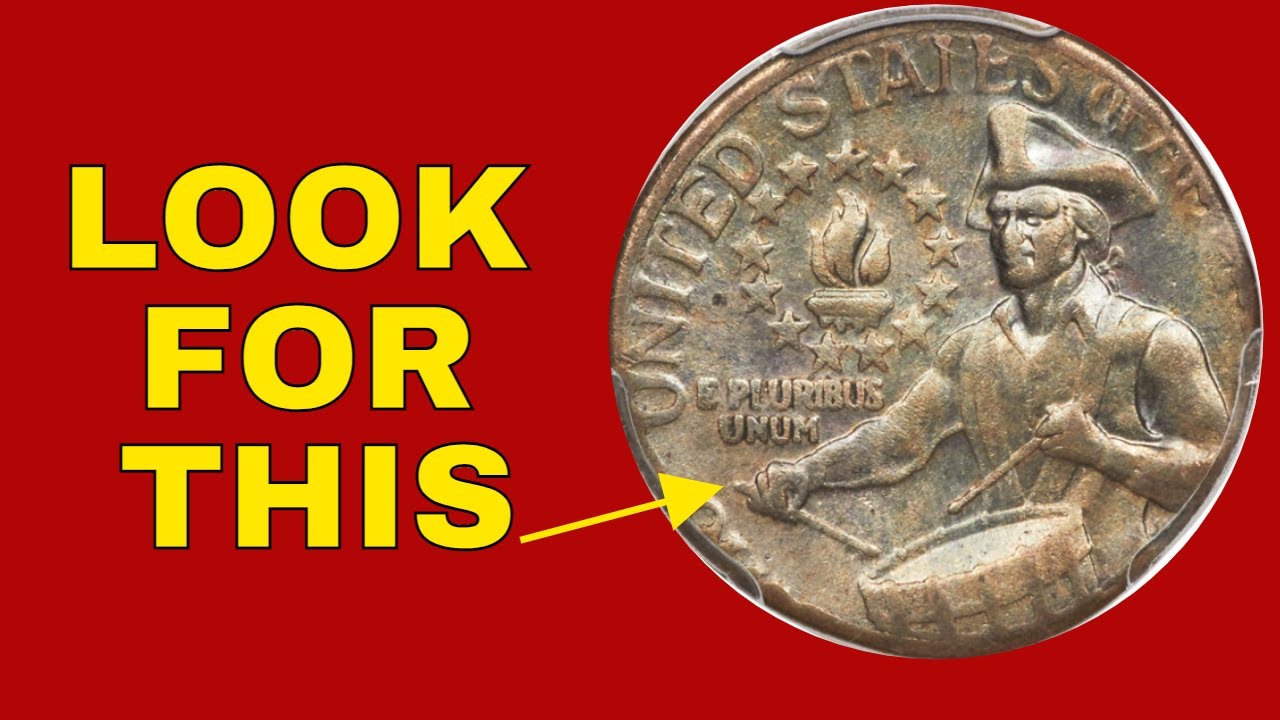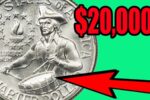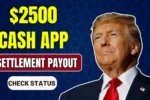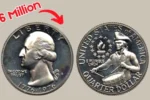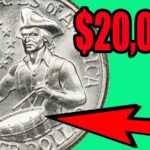The Rare Bicentennial Quarter Valued at $11 Million, Still in Circulation! Do You Have One of These Hidden Treasures?
Most of us don’t think twice about quarters. We use them for parking meters, vending machines, or toss them into a jar. But what if one of those simple coins was worth more than a luxury house? That’s exactly the case with a rare Bicentennial Quarter that’s been valued at an unbelievable $11 million.
Yes, you read that right. A 25-cent coin, created decades ago, is now making headlines because of its extreme rarity and shocking value. In this article, we’ll break down what makes this quarter so valuable, how to spot one, and what you should do if you think you’ve got one in your collection.
Overview Table: Key Facts About the $11 Million Bicentennial Quarter
| Feature | Details |
|---|---|
| Coin Name | Bicentennial Quarter |
| Face Value | $0.25 |
| Year Issued | 1976 (dated 1776–1976) |
| Unique Feature | Rare minting error and special material |
| Estimated Value | Up to $11 million |
| Design | Colonial drummer on back, Washington on front |
| Mint Marks to Watch | “S” for San Francisco, error variants |
| Still in Circulation? | Possible, but very rare |
What Is the Bicentennial Quarter?
The Bicentennial Quarter was minted in 1975 and 1976 to celebrate the 200th anniversary of American independence. It features a special design showing a Colonial drummer on the reverse side and the dual date “1776–1976” on the front.
Millions of these quarters were made, and most are still only worth 25 cents today. However, a few special versions are now worth a fortune. One of them has been valued at $11 million due to its rare combination of features, including a mint error and unique material.
What Makes the $11 Million Quarter So Special?
While most Bicentennial Quarters are common, the one valued at $11 million is incredibly unique. Here’s why it stands out:
1. Minting Error
This particular quarter was struck in a way that wasn’t supposed to happen. It may have a double die, a misprint, or other mistake during production. These mint errors can turn a normal coin into a collector’s dream.
2. Silver Composition
Most Bicentennial Quarters were made from copper-nickel, but some were made with 40% silver. A silver quarter is already more valuable, but this one is believed to have been struck on an unusual or test metal — possibly making it one-of-a-kind.
3. Uncirculated Condition
The quarter is in perfect or near-perfect condition, often referred to as “mint state.” That means it has no scratches or signs of use, adding even more value.
4. Collector Demand
Collectors love rare and historical coins. This quarter has both qualities, making it extremely desirable. When a coin is this rare and collectors compete to own it, the price can go sky high.
How to Know If You Have a Rare Bicentennial Quarter
While the chances are slim, it’s still worth checking your change or old coin jars. Here’s what to look for:
✔ Date
It must have “1776–1976” on the front instead of a regular year.
✔ Reverse Design
Check the back for the drummer boy holding a drum with a torch and stars nearby.
✔ Mint Mark
Look for the letter below Washington’s neck. The “S” mint mark (San Francisco) is often linked to the rarer versions.
✔ Silver Color
Silver coins have a brighter, cleaner look than copper-nickel ones. Some people use a magnet (silver is not magnetic) or a scale to check weight.
✔ Errors
Use a magnifying glass to check for doubling in the letters or numbers, unusual markings, or anything that looks off.
If your coin matches these features, you might have something special.
What to Do If You Think You Have One
If you find a Bicentennial Quarter that seems unique or unusual, here’s what you should do:
-
Don’t Spend It!
Keep the coin safe. Put it in a coin holder or soft cloth to protect it from scratches. -
Get It Evaluated
Take it to a professional coin dealer or a numismatic expert. They can tell you if it’s rare or valuable. -
Consider Coin Grading
If it looks promising, send it to a coin grading service like PCGS or NGC. They’ll grade and certify the coin, which can increase its value and make it easier to sell. -
Keep Documentation
If you do sell it or get it appraised, keep any papers or grading reports. They prove the coin’s value. -
Decide to Keep or Sell
If the coin is worth thousands (or millions), you can choose to keep it as an investment or sell it through an auction.
Frequently Asked Questions (FAQs)
1. Are all Bicentennial Quarters valuable?
No. Most are only worth 25 cents. Only rare ones with silver content, mint errors, or perfect condition are valuable.
2. Can I still find one in circulation?
It’s unlikely but possible. Some old coins remain in circulation. Most rare ones are found in old collections, jars, or estate sales.
3. How much are regular silver Bicentennial Quarters worth?
Silver ones can be worth around $5 to $10 depending on condition, but rare versions can go much higher.
4. What’s the best way to check for mint errors?
Use a magnifying glass and compare your coin to photos online. Look for doubling, off-center images, or missing details.
5. Should I clean the coin to make it look better?
No. Cleaning a coin can lower its value. Collectors prefer coins in their original, untouched condition.
Final Thoughts
It’s amazing to think that a tiny coin like a Bicentennial Quarter could be worth $11 million. For most people, it’s just a small piece of change. But for collectors, it could be a golden ticket — if the right features are there.
So the next time you go through your coins or find some old change lying around, take a moment to look closely. You never know — you might be holding a once-in-a-lifetime treasure that could change your life.
